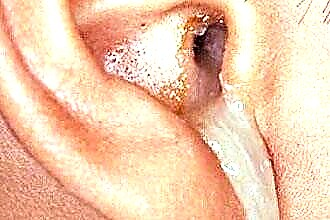The first mentions of the medicinal properties of aloe (wound healing and pain relieving) were found in the notes of ancient Egyptian doctors and date back to the 16th century BC. e. In Russia, aloe, which grows mainly in the hot and dry climates of Africa and South America, appeared as a house plant relatively recently - in the 19th century. From then until today, this plant has been actively used in medicine and cosmetology, both on an industrial scale and at home. Scarlet aloe flowers are collected in racemose inflorescences, but for medicinal purposes, the contents of the fleshy leaves of this plant (juice or gel) are usually used.
 Since aloe is a rather unpretentious and useful flower, many grow it at home and use it in the preparation of various medicines according to traditional medicine recipes. Most often, aloe is used in the treatment of diseases of the gastrointestinal tract, ophthalmic diseases, as well as for skin lesions, bronchial asthma and tuberculosis. In addition, many have successfully used aloe for sinusitis.
Since aloe is a rather unpretentious and useful flower, many grow it at home and use it in the preparation of various medicines according to traditional medicine recipes. Most often, aloe is used in the treatment of diseases of the gastrointestinal tract, ophthalmic diseases, as well as for skin lesions, bronchial asthma and tuberculosis. In addition, many have successfully used aloe for sinusitis.
This plant has indeed proved its effectiveness more than once, however, its beneficial properties are by no means a panacea. So, aloe juice with sinusitis, as with any other pathology, cannot become the basis of therapy, but should be used only as an auxiliary agent. Moreover, such treatment must necessarily be agreed with the doctor.
Uses of aloe
There are about 250 types of aloe, but only a few dozen of them have healing properties. In Russia, agave (tree-like aloe) and aloe vera are widely distributed and are actively used in folk medicine. The main value in the plant is represented by its juicy xiphoid leaves, filled with yellowish bitter juice and a gel-like mass. You can collect them for medicinal purposes at any time of the year. Usually, for the preparation of medicines, a plant is taken at least 3 years old, breaking off its lower leaves at the very base.
It is believed that the leaves retain their medicinal qualities for 4 hours after they are separated from the stem, so they are advised to use them immediately. Many experts also recommend putting the leaves in the refrigerator or in a cool, damp place after cutting for 10-14 days. It is assumed that due to the synthesis of biologically active substances, the effect of aloe extracts is enhanced. After keeping cool, the leaves are cut into small pieces and squeezed through cheesecloth.
Some doctors warn patients against using the leaves entirely and recommend cutting off the skin and using only the gel, since, according to studies by American scientists, in large doses aloin (aloe juice), located between the skin and the gel, is carcinogenic.
The healing properties of aloe in the treatment of sinusitis
It is believed that the use of aloe for sinusitis improves the drainage of mucopurulent masses from the sinuses, and also helps to reduce mucosal edema. In addition, the chemical composition of the plant allows us to talk about its immunomodulatory qualities. Treatment of sinusitis with aloe juice is effective in both viral and bacterial nature of the disease. The composition of this plant includes such useful substances:
 tannins (effective in combating purulent disease);
tannins (effective in combating purulent disease);- acemannan - a polysaccharide involved in the immunomodulating and anti-inflammatory process;
- saponins (contributing to the liquefaction and elimination of pathological exudate);
- phytoncides (have an antibacterial effect);
- vitamins A, B, C, E (increase immunity).
Thus, with maxillary sinusitis, aloe has a complex effect on the body: it liquefies and improves the outflow of mucopurulent masses, fights the inflammatory process, helps to reduce edema and restore normal functioning of the mucous membrane of the maxillary sinuses and nasal cavity, and also activates the immune system. It should be understood that for all its advantages, aloe does not belong to licensed medicines and does not have such a force of action to cope with the disease on its own.
It is necessary to treat sinusitis, especially bacterial, with the help of antibiotics, using medicines based on aloe to enhance the therapeutic effect and to accelerate recovery. Also, given that vasoconstrictor drops, traditionally prescribed for inflammation of the maxillary sinuses, are not recommended for longer than 5 days, nasal drops made from aloe can be a good alternative.
Contraindications to the use of aloe
Due to the presence of catechins and flavonoids in the composition of aloe, local application of the juice or gel of the plant very rarely causes allergic reactions in the body. However, before using aloe-based medicines, you should still consult with your doctor and make sure that there is no individual hypersensitivity to such drugs.
Based on the fact that aloe helps to dilate blood vessels and, as a result, improve blood flow, its use is contraindicated in cardiovascular diseases, severe gastrointestinal disorders and nephritis. In addition, aloe cannot be used in conditions that are accompanied by bleeding (uterine and gastric bleeding, hemorrhoids, menstruation, etc.) and during pregnancy (the risk of miscarriage increases).
Traditional medicine recipes using aloe
 Local application of aloe - in the nose - for sinusitis is considered one of the most effective forms of treatment, however, the juice and gel of this plant is also used to prepare tinctures and liquids for inhalation. In addition, aloe is often combined with other ingredients to increase the effectiveness of the medicine. Among the most effective folk recipes are:
Local application of aloe - in the nose - for sinusitis is considered one of the most effective forms of treatment, however, the juice and gel of this plant is also used to prepare tinctures and liquids for inhalation. In addition, aloe is often combined with other ingredients to increase the effectiveness of the medicine. Among the most effective folk recipes are:
- For adults, instill 2 drops of undiluted aloe juice into each nasal passage every 4 hours. Children or adults with a particularly sensitive mucous membrane of the nasal cavity should dilute the juice with water in a 1: 1 ratio and apply in the same dosage and with the same frequency.
- Mix equal parts fresh carrot juice and aloe juice. Instill 4 drops in both nostrils 3 times a day.
- Mix equal proportions of aloe juice and Kalanchoe juice. Add a pinch of salt and a teaspoon of honey to 2 tablespoons of the juice mixture and instill 3 drops in both nostrils 3 times a day.
- Mix 1 tablespoon of aloe juice with 5 drops of onion juice. Instill in each nasal passage 3 drops three times a day.
- Mix aloe juice with honey in equal proportions and add celandine juice diluted with water in a 1: 1 ratio. Instill 4 drops in each nostril 3 times a day.
- Fill half a glass with aloe leaves, cut into small pieces. Fill them with 300 ml. water and cook in a water bath for 10 minutes. Allow the liquid to cool down to about 40 degrees and carry out inhalation (you can inhale hot vapors only if there is no high temperature and strong purulent inflammation). Repeat the procedure twice a day.
- Mix equal amounts of aloe juice, Kalanchoe, cyclamen and Vishnevsky ointment. Moisten cotton wool in the mixture and insert into the nasal passages for 10 minutes. Repeat the procedure twice a day.
- Cut 3 aloe leaves into small pieces, chop 1 red pepper and a tablespoon of celandine herb. Mix all the ingredients, pour vodka over them so that the mixture is completely covered. Leave in a dark place for 5-7 days. Then, twice a day, lubricate the area of the maxillary sinuses and the bridge of the nose.
- About 100 g of honey and about 100 ml. Mix aloe juice with one bottle of Cahors. Insist and take 1 teaspoon before meals.
Aloe-based medicines can be used both during the treatment of acute inflammatory processes and in the treatment of chronic sinusitis.
Usually, during the period of exacerbation of the disease, vasoconstrictor drugs cannot be dispensed with, but in the period of remission, aloe-based nasal drops are an effective alternative.

 tannins (effective in combating purulent disease);
tannins (effective in combating purulent disease);

